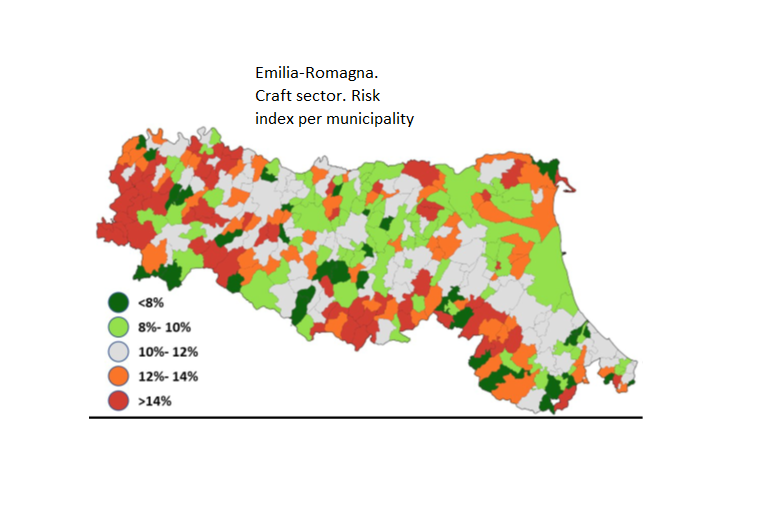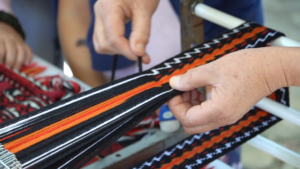Article by Unioncamere Emilia-Romagna
On 21st of April 2023 Unioncamere Emilia-Romagna the deputy manager, Guido Caselli, presented a survey carried out by the Unioncamere research Department on generation-turnover in craft companies to the Emilia-Romagna Regional Craftsmanship Commission.
The Commission, provided for by art. 5 of the regional law 09 February 2010, n. 1 of Emilia-Romagna (rules for the protection, promotion, development and enhancement of craft enterprises), is the body for the protection and representation of crafts sector and it is based in the Emilia-Romagna Regional Government. It carries out several functions, such as the expression of opinions and proposals related to the register of craft businesses, non-binding opinions on the main issues of a general nature in the field of craftsmanship; promotion of stable forms of communication with the Chambers of Commerce and with Unioncamere Emilia-Romagna in the handicraft sector; submission of proposals to the Regional Government, for the protection, enhancement and development of craftsmanship.
The aim of the study is to identify the artisan companies that in the short term could find it difficult to ensure business continuity due to the seniority of the ownership.
According to data from the business register, at the end of 2022 123.560 craft companies were active in Emilia-Romagna with just over 290,000 employees.
For 106.318 companies, which employ around 268,000 employees, it has been possible to trace both the ownership structure (owners, shareholders and any partners), and all the representatives (if any) who hold managerial or important positions – for example members of the board directors, managers or senior technicians – in the companies. 143.804 people were identified who, for various reasons, hold 301.350 strategic positions within the companies.
From a methodological standpoint, 2 algorithms have been implemented. The first, called “governance index”, takes into account the age of people in the company, assigning an increasing value as age increases. It does not represent an actual risk of absence of generational turnover, rather it expresses the presence of a governance of the company that is “mature” and probably – with a good deal of approximation and generalization – less prone to change.
The second index, called “risk index”, divides craft enterprises into five risk classes (or age classes). Class assignment is determined by the lowest age among the owners and management of each enterprise. Specifically, if the youngest person in business governance is up to 59 years old, he or she falls into the first class; from 60 to 64 he or she years old falls into the second class; from 65 to 69 years he or she old falls into the third class; from 70 to 74 he or she years old falls into the fourth class; from 75 and up he or she falls into the fifth class.
If for the first two classes, i.e., up to 64 years of age, the risk of generational turnover is absent or still distant in time, for the remaining three classes the risk is tangible, with fallout in the very short term for the last two classes, those where the youngest person in the company is at least 70 years old.
Coming to the general scenario descripted in the survey, almost 83.000 of the 106.000 craft companies have a member under 60 involved in the governance. In 4,200 cases next to a member under 60 there are other people over 65 involved in the governance; it can be assumed that these are companies in which the generational transition has already taken place, or is imminent and already prepared within the company itself.
In about 12.000 companies, the youngest member involved in company’s governance is aged between 60 and 64 (second risk class). In 10.000 of these 12.000 companies the governance is referred to a single person, in 1.700 cases the governance is attributable to a family unit. For this age group, the issue of generational turnover will probably become critical in a few years, preparing it in time may be appropriate
The third class includes companies for which the issue of generational turnover might arise shortly, if not already present. In about 6.000 companies, the youngest member involved in company’s governance is between 65 and 69 years of age, 4.000 companies have only one employee, 165 have at least 10 employees.
The fourth and fifth class represent the most critical ones: the youngest member is at least 70 years old, 5.200 companies which add up to 11,200 employees. Within these two classes, 400 companies have at least 6 employees.
In summary, it can be said that 6.086 enterprises (risk class 65-69 years) in the medium term, and 5.202 enterprises (risk class 70-74 years and risk class 75 years and over) in the short term will face generational transition.
They amount to 11.288 enterprises, that is to say 10,6 percent of the total number of craft enterprises.
As far as the craft sector related to industrial activities is concerned, 3.276 craft companies – the 13,9 percent of the total amount of this businesses of this sector – are considered at risk.
In percentage terms, it is mechanics that is the sector with the highest risk, 20,2 percent, whilest food sector has the lowest risk index, 9 percent.
Construction sector, with nearly 41 thousand craft enterprises is the numerically largest sector. The sector is characterized by a strong foreign presence and young entrepreneurs, so the risk is quite low, 3,477 companies for a share of 8.5 percent.
In the business services sector, there are 1,880 companies at risk, including 1,132 in logistics; in personal services, there are 1,527 companies identified at risk by the algorithm.
In absolute values, the business that could face the greatest difficulties in generational transition is the services of hairdressers, manicurists, pedicurists and beauty treatments: there are 883 companies in which the youngest governance member is at least 65 years old, a figure that puts nearly 10 percent of salons at great risk.
874 craft firms are at risk in the road haulage sector, and in many sectors of the construction industry there are numerous companies that will soon face generational changeover.
High-risk and, at the same time, craft-relevant activities include the manufacture of farm tractors and other agricultural machinery, the business of industrial laundries, the manufacture of household and ornamental ceramic products, and the repair of audio and video consumer electronics.
Whilst for enterprises located in major municipalities the associated risk is 10.2 percent, for those in outermost municipalities, such as those in the Apennines, the risk rises to 12.7 percent.
In conclusion, it has been stressed the need to mobilise more all key actors (institutions and the trade associations) to they work together in order to facilitate the generation turnover of craft businesses, avoiding the loss of know-how and jobs.




